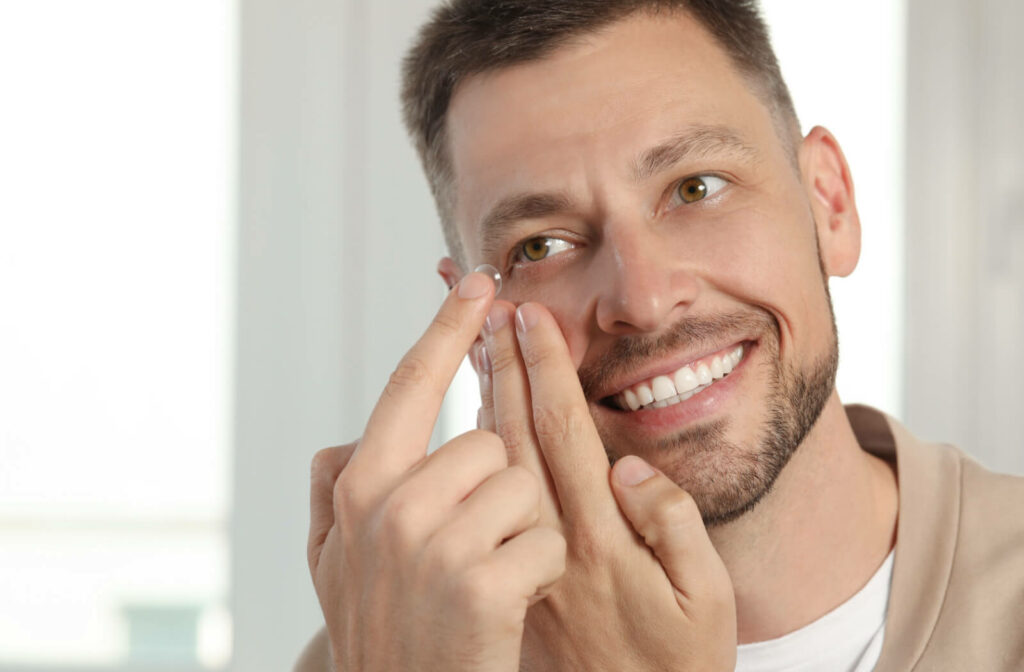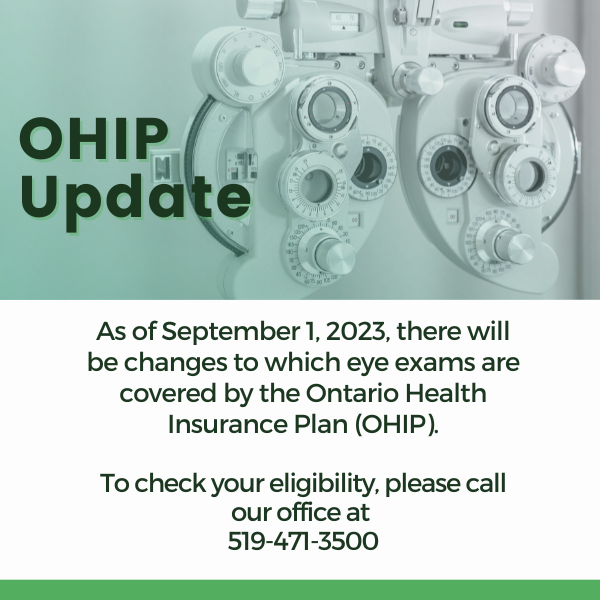Contact lenses can allow you to go glasses-free for sports, fashion, or simply because you want to. If you’ve ever wondered about contact lenses or what a contact lens fitting is like, then let’s dive in!
A contact lens prescription is different from a glasses prescription because the contact lens is worn directly on the cornea. They are medical devices that must be properly fitted for your comfort and safety.
To determine which lenses are ideal for your eyes, an optometrist will assess your general eye health when you schedule a contact lens fitting. To determine accurate sizing, your eye doctor will collect specific measurements. Part of the fitting will include talking about your lifestyle, vision requirements, and expectations for contact lens wear in general.
During the Lens Fitting
Each contact lens fitting starts with a consultation where your optometrist will inquire about your medical background and lifestyle. The initial stage of a lens fitting is an eye exam, which includes a full health check of the eye and determination of your prescription and refractive error.
Next, the optometrist will examine your eye’s interior and exterior using a slit-lamp. You may also have an eye pressure examination to check for glaucoma. Finally, the optometrist may enlarge your pupils with dilation eye drops to examine the retinas in the back of your eyes.
With the initial eye exam complete the optometrist will begin the contact lens fitting portion of the exam. They will start with taking specific measurements of your eye.
Corneal Measurement
The optometrist will measure the curvature of your cornea, the transparent portion of your eye, using a corneal topographer. Your forehead will rest on a brace as light shines into your eye. The corneal topographer measures your cornea precisely by examining how light reflects off your eye.
Tear Film Evaluation
Dry eye syndrome is one of the most likely problems contact wearers endure. Your eyes may become red and inflamed when they don’t produce enough moisture. If untreated, this dryness can harm your eye’s surface, which might result in an infection.
The optometrist may test your body’s ability to generate tears by placing a little piece of paper behind your lower eyelid for a few minutes. It will then be retrieved by the optometrist, who will use it to assess your capacity for producing tears.
If you are susceptible to dry eye syndrome, you may be recommended eye drops.
After the Lens Fitting
You’ll need to make a follow-up appointment after your initial contact lens fitting. Finding the ideal lenses may take trying out a few different types of contact lenses for some individuals.
You can use your final prescription to purchase contact lenses from your eye doctor. Your prescription will include your eyes’ diameter, base curve, and contact lens power.
Contact Lens Care
Since contact lenses sit directly on the cornea, it is essential to carefully follow your optometrist’s instructions to help your eyes remain healthy. Improper contact lens usage and handling can lead to infections and other complications, so cleanliness is important.
Some simple contact care instructions to follow are:
- Take your lenses out before bed.
- Wearing contact lenses while bathing, using a hot tub, or swimming is not advised.
- Follow the optometrist’s advice when replacing and caring for your lenses.
- Never use tap water to clean lenses.
- Before using or removing contact lenses, properly wash and dry your hands.
- Be sure to schedule annual, comprehensive eye exams.
Patient-Focused Eye Care
Whether you’re new to contacts, or are looking to change up your lenses, we’d love to help! Schedule an appointment with Byron Optometry for patient-focused, friendly eye care.



